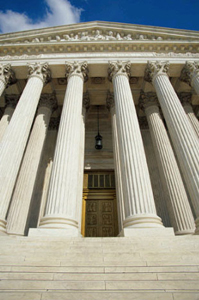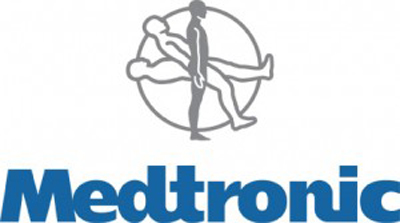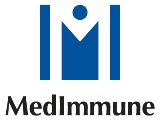 On May 20, 2013, the Supreme Court granted certiorari in the Medtronic Inc. v. Boston Scientific Corp. case (Supreme Court docket number 12-1128). The sole issue on appeal is encapsulated by the question presented:
On May 20, 2013, the Supreme Court granted certiorari in the Medtronic Inc. v. Boston Scientific Corp. case (Supreme Court docket number 12-1128). The sole issue on appeal is encapsulated by the question presented:
QUESTION PRESENTED:
In Medlmmune, Inc. v. Genentech, Inc., 549 U.S. 118, 137 (2007), this Court ruled that a patent licensee that believes that its products do not infringe the patent and accordingly are not subject to royalty payments is "not required . . . to break or terminate its . . . license agreement before seeking a declaratory judgment in federal court that the underlying patent is . . . not infringed."
The question presented is whether, in such a declaratory judgment action brought by a licensee under Medlmmune, the licensee has the burden to prove that its products do not infringe the patent, or whether (as is the case in all other patent litigation, including other declaratory judgment actions), the patentee must prove infringement.
 As suggested, this wrinkle is the inevitable consequence of the Court's previous MedImmune decision, which allowed a patent licensee to challenge the validity (and non-infringement) of a patent in a DJ action without repudiating the licensee. In such a case, however, the patent holder could not have brought its own patent infringement action (because of the license agreement), and more importantly, the patent holder could not bring an infringement counterclaim. The Supreme Court did not address in MedImmune whether the patent holder would still have the burden of proving infringement in such a case where the licensee was seeking to disturb the status quo ante. This issue was answered in the negative by the Federal Circuit in Medtronic Inc. v. Boston Scientific Corp., 695 F.3d 1266 (Fed. Cir. 2012), as we reported at the time. In its petition for cert., Medtronic equated this with a "presumption of infringement," and noted that proving the negative can be "a formidable task." In any event, it can be assumed that the Supreme Court took up this case because it disagreed with the Federal Circuit's decision, and therefore the burden will likely shift back to the patentee to prove infringement in the MedImmune context. Nevertheless, it may be useful to look at the factual differences between the MedImmune and Medtronic cases, and identify what to do if faced with a similar situation in the interim.
As suggested, this wrinkle is the inevitable consequence of the Court's previous MedImmune decision, which allowed a patent licensee to challenge the validity (and non-infringement) of a patent in a DJ action without repudiating the licensee. In such a case, however, the patent holder could not have brought its own patent infringement action (because of the license agreement), and more importantly, the patent holder could not bring an infringement counterclaim. The Supreme Court did not address in MedImmune whether the patent holder would still have the burden of proving infringement in such a case where the licensee was seeking to disturb the status quo ante. This issue was answered in the negative by the Federal Circuit in Medtronic Inc. v. Boston Scientific Corp., 695 F.3d 1266 (Fed. Cir. 2012), as we reported at the time. In its petition for cert., Medtronic equated this with a "presumption of infringement," and noted that proving the negative can be "a formidable task." In any event, it can be assumed that the Supreme Court took up this case because it disagreed with the Federal Circuit's decision, and therefore the burden will likely shift back to the patentee to prove infringement in the MedImmune context. Nevertheless, it may be useful to look at the factual differences between the MedImmune and Medtronic cases, and identify what to do if faced with a similar situation in the interim.
 One of the most significant differences between these two cases is that, despite the lengths that Justice Scalia takes to categorize the suit in MedImmune as one for a determination of non-infringement, that earlier case was really a case about validity. MedImmune had entered into a license agreement with Genentech for rights to an existing patent related to the production of chimeric antibodies, and for the future rights to a then-pending patent application related to the coexpression of immunoglobulin chains in a host cell. That pending application issued as the "Cabilly II" patent, and Genentech informed MedImmune that its manufacture of Synagis, a drug used to prevent respiratory tract disease in infants and young children, was covered by this patent. MedImmune's precise position on whether the Cabilly II patent covered the manufacture of Synagis is unclear from the description in the Court's opinion. However, it appears that MedImmune believed that it did not "infringe any valid claim," and did not believe that there would be no infringement regardless of the validity of the claims.
One of the most significant differences between these two cases is that, despite the lengths that Justice Scalia takes to categorize the suit in MedImmune as one for a determination of non-infringement, that earlier case was really a case about validity. MedImmune had entered into a license agreement with Genentech for rights to an existing patent related to the production of chimeric antibodies, and for the future rights to a then-pending patent application related to the coexpression of immunoglobulin chains in a host cell. That pending application issued as the "Cabilly II" patent, and Genentech informed MedImmune that its manufacture of Synagis, a drug used to prevent respiratory tract disease in infants and young children, was covered by this patent. MedImmune's precise position on whether the Cabilly II patent covered the manufacture of Synagis is unclear from the description in the Court's opinion. However, it appears that MedImmune believed that it did not "infringe any valid claim," and did not believe that there would be no infringement regardless of the validity of the claims.
The situation in the current Medtronic case is distinct. Medtronic had entered into a license agreement in 1991 with the predecessor-in-interest of the patents-in-suit, which covered cardiac resynchronization therapy ("CRT") devices. However, the products that were the subject of this case were not marketed until 2004, and therefore (obviously) they were not specifically identified in the license. Nevertheless, the license contained a provision by which the licensor could identify new Medtronic products that it believed were covered by its patents. If Medtronic believed that any newly identified products were not covered by the agreement, they had the option to initiate a declaratory judgment action to challenge the non-infringement and/or validity of the asserted patents. In other words, this agreement had a MedImmune provision more than 15 years before the Supreme Court decided the case. So, at its heart, the present case is a non-infringement case (non-infringement of the licensed patents), not necessarily a validity case (even though there were validity counts in the lower court).
So, why does this matter? Well, it might not. But, a review of the reasoning used by the Supreme Court in MedImmune shows that the logic begins to unravel if it is applied to every factual situation. In MedImmune, the Court gave the impression that it is axiomatic that a licensee can bring a declaratory judgment action without repudiating the contract, but in so doing, it needed to overcome many logical hurdles to reach that conclusion. This is because the existence of a license should remove any case-or-controversy as required by Article III. Nevertheless, as the Court put it: "[t]he rule that a plaintiff must destroy a large building, bet the farm, or (as here) risk treble damages and the loss of 80 percent of its business, before seeking a declaration of its actively contested legal rights finds no support in Article III." MedImmune Inc., 549 U.S. at 134. Is this always the case, though? It would not appear to be in situations where the patent and the licensed product or method existed when the license agreement was reached. In such a case, if the licensee had a reasonable belief that the patent was invalid (or not infringed), such as an opinion of counsel, then it should not be at risk of treble damages. Instead, after MedImmune, such a licensee can negotiate the best terms possible, and still be able to subsequently attack the patents while hiding behind the license as a shield. The MedImmune logic, therefore, only appears to be applicable to after-arising patents or products/methods.
In fact, the MedImmune case had the ideal fact situation for the logic presented. MedImmune needed the license to the first patent to practice its method of manufacture without fear of suit. Therefore, it could not repudiate the agreement, even though it believed that the claims of the issued Cabilly II were invalid (and, unfortunately, the Court's opinion in silent as to why the Cabilly II application was included in the first place). This is the classic "bet-the-farm" situation. This is not necessarily the case for the Medtronic fact scenario, which encompasses after-arising products that were not part of the agreement. Specifically in that case, it was the license provision dealing with new products that required Medtronic to bring its declaratory judgment action. However, in these cases, it all comes down to license drafting -- what mechanism does the agreement use to incorporate products or methods that do not exist at the time of execution? Correspondingly, the response to the question presented of whether the licensor patent holder or the licensee should have the burden of proving infringement/non-infringement should also depend on the particular facts.
But, in the end, this distinction will likely not matter, because the MedImmune decision was decided as a non-infringement case (over the protests of Justice Thomas in dissent). It is possible that Justice Scalia took such pains to describe the case as such, because a DJ case directed solely to validity of patents would have looked a lot more like an advisory opinion, and therefore satisfaction of Article III's case-or-controversy requirement would have been more suspect. It can therefore be presumed that a majority of the Court will still not view these cases as factually distinct. And, given that cert. was granted, it is likely that the Medtronic burden-of-proof issue will swing back to the patentee.
What actions should a licensor patent holder take if now faced with a MedImmune-style DJ action? It would clearly seem advisable to put on the best infringement case possible, in case the burden of proof does shift back. Otherwise, it would seem critical to treat all of these issues upfront when entering into a license agreement. Careful attention should go into any provision that would determine how any new patent or product/method would get incorporated into the agreement, if such a provision is even included at all. It is not inconceivable that that parties would need to renegotiate for any subsequent activity that might be incorporated to the agreement.
Patent Docs will continue to monitor this case and provide any updates as warranted.